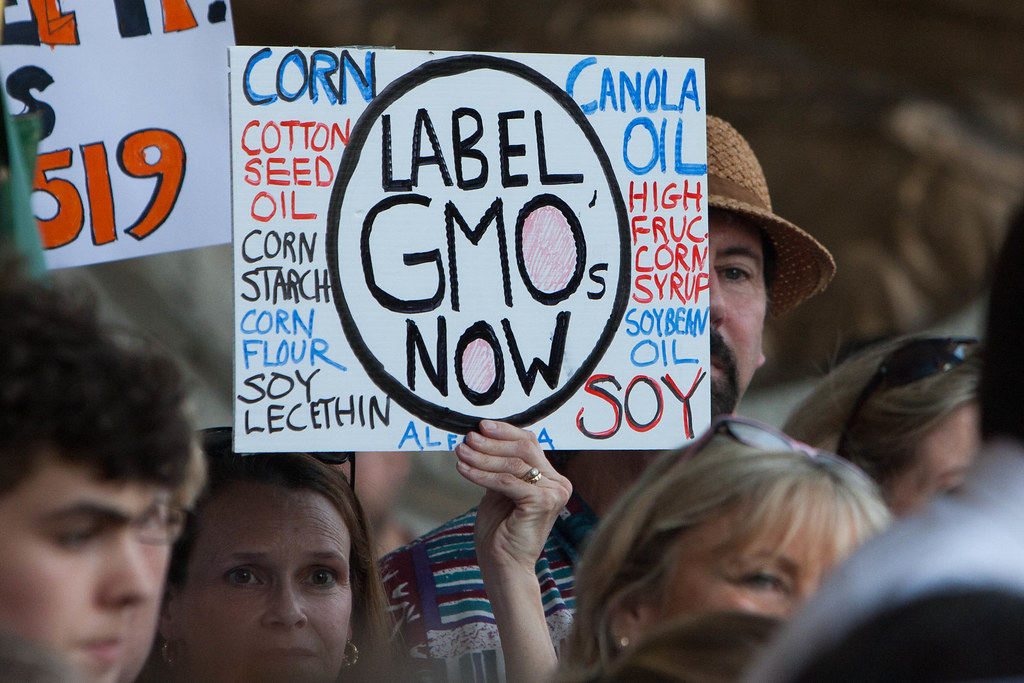Bein the Know When it Comes to GMOs

Ever since the development of genetic engineering (the altering of an organism’s genome) in the 1970s, there has been an ongoing feud between those that believe it could be the savior of modern-day food, and those who are ready to put the brakes on the modification of consumable goods. With both sides putting forth solid counterarguments, here’s what we know about GMOs so far:
What are GMOs?
GMOs, or “genetically modified organisms” are used in many different ways around the world. The term itself refers to any organism that has undergone genetic engineering: bacteria, viruses, animals, plants, you name it!
How are GMOs made?
The process starts with the selection of desired traits, such as disease resistance or higher nutritional value of a certain vitamin or mineral. These are taken from existing species with the gene of interest
The genes that have been settled on for implementation in the new plant are copied and inserted into the intended organism/species
Scientists and investigators grow these plants to adulthood and test them for successful gene implementation (if they wanted a particular disease resistance, they expose the organism to that specific disease and see if it becomes infected)
If the tests are successful (and there are many tests), these plants can be sold to farmers for the production of the crop.
Why were they introduced?
The reason that GMOs were introduced stems from a couple main reasons:
- Due to the extensive agricultural boom that took place worldwide, in addition to rising carbon dioxide levels (while they need it to survive, too much can be a bad thing!), plants being mass-produced have been losing their nutritional value, causing humans to continually miss out on the natural vitamins and minerals essential to our survival
- As new plant diseases and afflictions evolved, certain species of foods started to lose the fight, which could potentially leave us without our favorite fruits and veggies in the future
- With the discovery that pesticides and herbicides were dangerous not only to plants but the humans who consumed food that utilized them came to light, scientists used GMOs to find ways to avoid the use of these dangerous chemicals while still protecting crops from interfering pests
Examples of GMOs
Below are some common foods planted and harvested, ranked by the percentage grown that are actually GMOs (compared to those that are “untouched” genetically), according to the FDA:
- Sugar Beets – 99.9%
- Canola – 95%
- Soybeans – 94%
- Cotton – 94%
- Corn – 92%
Now that we know what GMOs are and how they’re made…who is in the fight for and against them? Well…
Prominent supporters of GMOs
These supporters believe that GMOs are the peak of modern technology, allowing us to fight plant disease and reduce poverty around the world. With GMOs becoming easier to grow, food prices in grocery stores around the world are starting to decrease, allowing more people access to fresh produce and potentially better health outcomes. In addition to that, with the growing industrialization of the land, these products try to make sure that our bodies are supplied with the necessary nutrients to stay strong as we age, even as the non-modified variants lose the ability to do so. The companies above are proud to support this cause, and they work towards showing the world just what GMOs can do.
Prominent opposers of GMOs
Those against GMOs believe that not nearly enough research has gone into the safety of their production, and fight for more regulation in the industry. With genetically modified food being introduced rather recently in the grand scheme of things, it seems there just was not enough time spent on vetting products before they hit the shelves. The Center for Food Safety advocates for clearer study results, worried that the few studies that suggest potential harm from ingesting these products are the ones to pay attention to. The Non-GMO Project wants to put trust back into the food industry, so people know exactly what they’re eating and where it comes from. Natural, untouched food is the gold standard, and products engineered in the lab are no substitution.
So, who’s right?
Unfortunately, that’s something you’ll have to decide for yourself! There are many studies that you can find, and a plethora of resources for further investigation if you’re into the technical side of things. Whatever you decide, we’ll use this information to work towards a promising future in the world of food production (and take care of the planet while we’re at it)!
Image Source: “Rally to Support GMO Food Labeling” by CT Senate Democrats


Leave a Reply